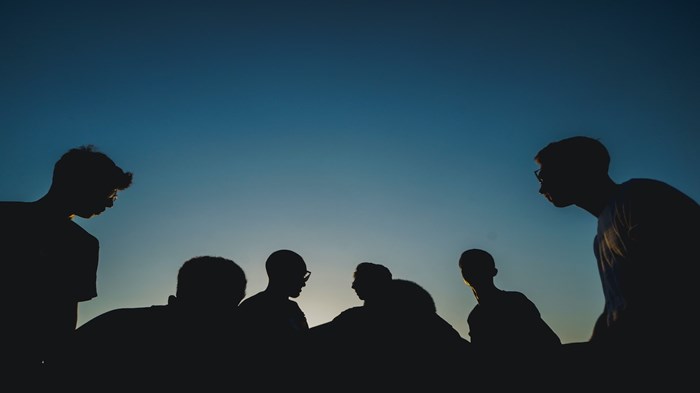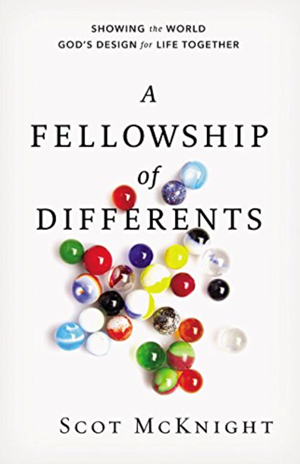Invisibles Becoming Visibles

As protests are being conducted and performed throughout the world as a sign of unrest, dissatisfaction, and distrust, short term and long term solutions are being explored. I am convinced the church has a distinct opportunity to embody listening, learning, repenting, and reconciling. As such it has the challenge to become a “fellowship of differents.” As such, and this is the focus today, it has the chance to turn invisible people into visible siblings. The following is an excerpt from my A Fellowship of Differents
Recently I was having lunch with a gifted Northern Seminary student named Phil, during which time he mentioned to me the Hampton pastor’s conference. I must have looked stone-faced because he said to me, “Have you ever been to the Hampton conference?” I said, “Well, no, and neither have I ever heard of it.”
So he told me about it – google it yourself – in June 2013 the Hampton University Ministers’ Conference gathered for its 99th annual event. So I wrote to a few publishers and asked editors if they had ever been to the Hampton conference and I got back the same stunning response from each editor I wrote and it was this: “Never heard of it.” Not one person I wrote to had ever heard of it. The longest running pastors conference in the USA, attended by seven thousand, and I was embarrassed at my whiteness for not knowing that my brothers and sisters were gathering. They were invisible to me.
Groups and groups of wonderful Christian people, and not just those of different ethnicities, have become invisible to one another – we don’t even see one another. God designed the church to make the previously invisible visible to God and to one another in a new kind of fellowship the Roman Empire and the Jewish world had never seen before. That was the fellowship of God. Let me tell a story and then ask a “test” question.
Invisible People
In 1953 Ralph Ellison won the National Book Award for The Invisible Man, a novel about the journey of an African American man from southern roots and dreams of leadership at an African American college to sudden, immediate expulsion from that school. He struggled to find employment so he could return to college and enter into the American Dream, and discovered the Dean at his former school had lied to him and that he would never be re-admitted. Then he explored two major options in New York City for a transplanted southern black: the path of communism or the path of violent subversion of white power and culture.

A singular, reader-frustrating feature of Ellison’s brilliant novel is that central character has no name. Why? Because, in some ways, the black man/male/female was (and still is) invisible and anonymous in American society. Ellison’s descriptions of the experience of invisibility pierce into the soul of America and more alarmingly into the soul of the church: “About eighty-five years ago they were told that they were free, united with others of our country in everything pertaining to the common good, and, in everything social, separate like the fingers of a hand.”[i] In American history this experience found its way into a social “policy”: separate but equal, a policy many of us learned on Sunday morning at 11am and which really meant “separate because unequal.” Later Ellison’s character will embrace a new mantra: “When I discover who I am, I’ll be free.”[ii] Our soul-numbing system made the African American invisible by overwhelming African American culture with a dominant white Protestant culture.
Gentile invisibility to the Jewish community was not identical to the African American invisibility experience in the United States. But Paul is relevant to us today because his ambition – breaking down ethnic barriers by – is the preeminent 21st Century church problem. The typical Jew of Paul’s day did not see the Gentile in the synagogue; that meant God’s covenant with Abraham was Jewish-only. Jews and Gentiles could be nearly invisible to one another. The 1st Century Jewish synagogue and the 21st American church are too much alike in this regard: visibility is connected to ethnicity. White people see white people, Asian sees Asians, Latins see Latins, and African Americans see African Americans. Methodists see Methodists, Baptists see Baptists … I need not string this out. In our churches Christians have become invisible to one another.
Paul yearned for no invisible people in the fellowship because Paul knew the power of God’s grace. He knew grace was the new creation at work in the present to make One People, Jews and Gentiles, under one Lord, King Jesus. Paul’s vision contrasts violently with American churches. 90% of American churches draw 90% of their people from one ethnic group, and only about 8% of American churches can be called multiracial or multiethnic or interracial. Let’s scrape the mud off even that 8%. Studies show that interracial churches are often little more than a white-culture church with ethnic mixture in the congregation.[iii]
The Test Question: Who is invisible in your church?
The Christian life is shaped by the church, the church is designed by God to be a salad bowl of different sorts of items all mixed together and visible and living the Christian life in fellowship. So the success of a church is first determined by how many invisible people become visible to those not like them.
To the degree folks are invisible, we don’t have the right view of the church or the right view of the Christian life.
The apostle Paul laid down one of the most brilliant lines in the history of mankind, a set of lines that reveal God’s grand social experiment called “church,” a set of lines that reveals what God wants the church to be and therefore how the Christian life is to be understood. I will reformat the lines so you see how central the grand experiment, the church, was for Paul:
There is neither Jew nor Greek [ethnic],
Neither slave nor free [social class, socio-economics]
Nor is there male and female [sex or gender].
Why is there no ethnic, class and sex ordering of life?
For you are all one in Christ Jesus.
The church is the grand experiment of God where differents get connected, where unlikes form a fellowship, and were the formerly segregated are integrated. They are to be one – not scattered all over the city – and they are one in Christ Jesus, in the salad bowl that holds the differents together.
There are different cultures, and there are different socio-economic classes, and there are different genders, and there are different sexual orientations, and there are different educations and incomes and kinds of work done and preferences in music and art and worship style and sermon length. They are all together, at the table, in the salad bowl, thrashing it out with one another. That thrashing it out is what the church is about and that is what the Christian life is all about: learning to love one another, by the power of God’s grace, so we can flourish as the people of God in this world. The purpose of the church is to be the kingdom in the present world and the Christian life is all about learning to live into that kingdom reality in the here and now.
[i] Ralph Ellison, The Invisible Man (New York: Random House, 1994), 15.
[ii] Ellison, The Invisible Man (New York: Random House, 1994), 239.
[iii] Korie L. Edwards, The Elusive Dream: The Power of Race in Interracial Churches (New York: Oxford University Press, 2008).
Jesus Creed is a part of CT's
Blog Forum. Support the work of CT.
Subscribe and get one year free.
The views of the blogger do not necessarily reflect those of Christianity Today.


















